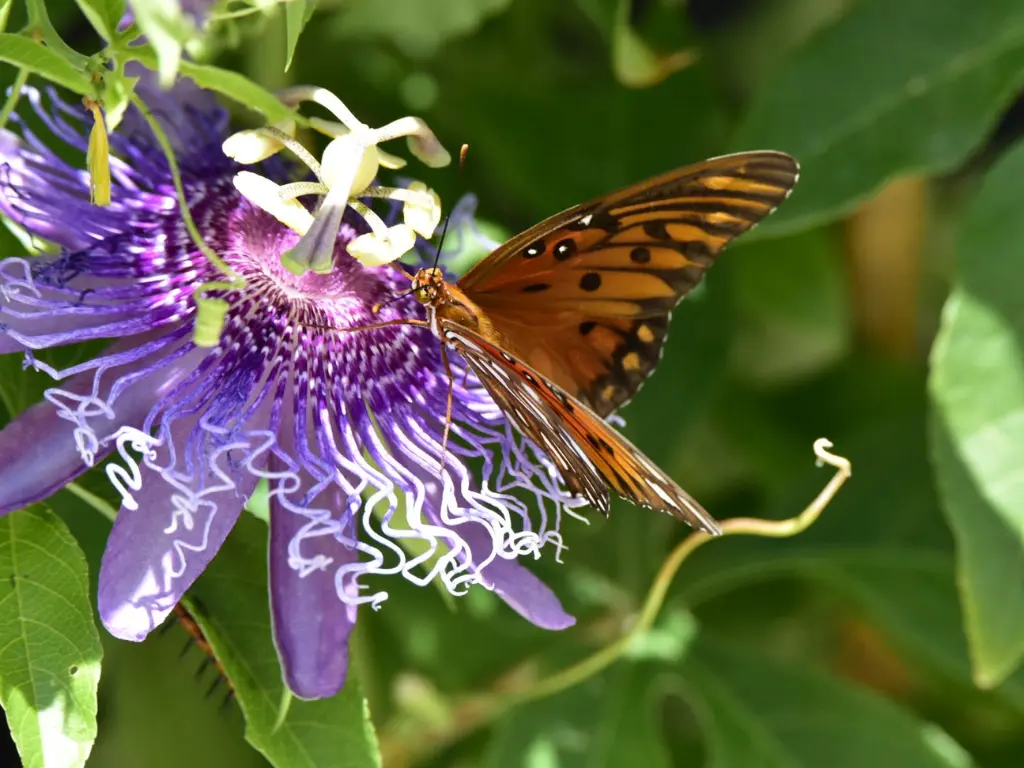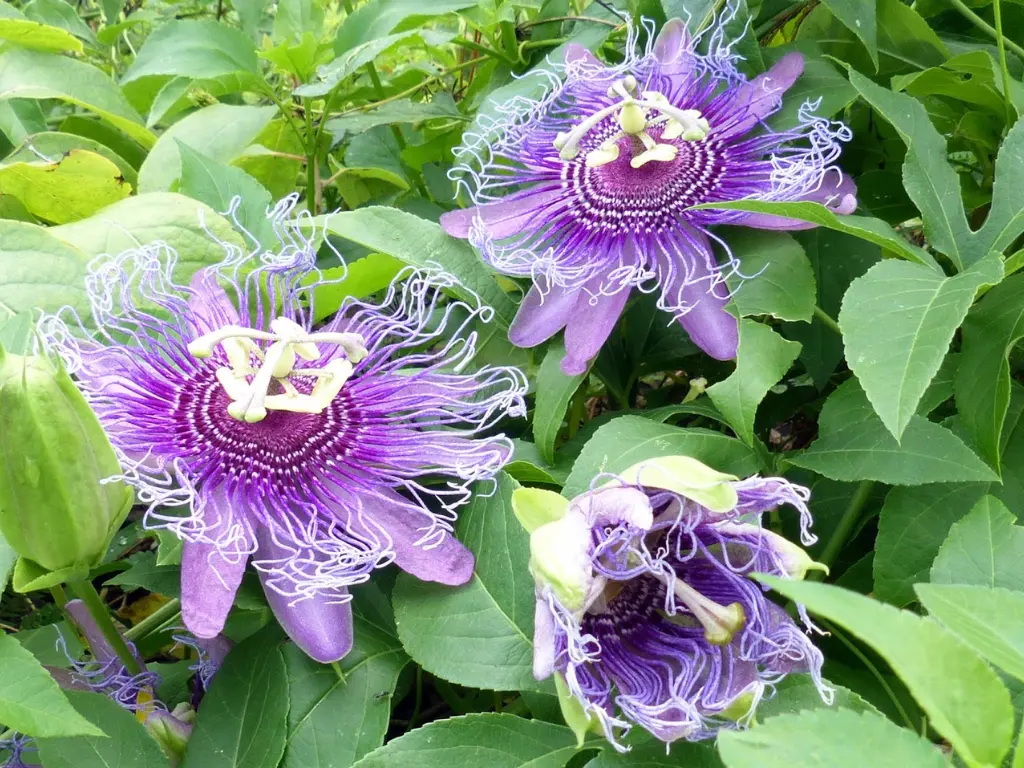Passion Flower Vine, or passionvine, is a showstopper in any southern garden—but beyond its wild, alien-like blossoms and sweet scent, it offers something even more magical: a haven for wildlife-friendly gardens.
Every spring in my backyard, the maypop vines wake up with the warming sun. One moment the trellis is bare, and the next—it’s alive with curling tendrils and fresh green leaves. Soon, giant flower buds form, and before long, those mesmerizing purple blooms unfurl like nature’s own fireworks. They don’t just look spectacular—they’re doing real work too.
These vines are a magnet for the fluttering guests I wait all year to welcome. Butterflies hover in excitement: gulf fritillaries, Julia longwings, zebra longwings, even the stunning variegated fritillary. Passionvine is their host plant—the nursery for their next generation. While some gardeners might balk at caterpillars munching away, I say: let them feast! After all, this garden belongs to them too.
Want to make your own yard a haven for butterflies and birds? Start with passionvine—and watch what happens next.
Why Passion Flower Vine is Perfect for Wildlife

There are nearly 500 species in the Passiflora family, but one of the most beloved natives in the Southeast is Passiflora incarnata, also known as maypop. Hardy in zones 6 to 10, it grows vigorously—sometimes too vigorously! Don’t be surprised to find new shoots popping up far from where you planted them. But that’s part of the charm: it’s a survivor, persistent and enthusiastic.
Maypop thrives in full sun and can tolerate drought once established. Let it sprawl over fences, crawl along the ground, or climb up a trellis—it’ll find a way. Learn how to train your passionvine on a trellis for a stunning display. The vines can stretch 15 to 30 feet, and come mid-summer, the blooms appear in shades of violet, with a scent that’s softly citrusy and unforgettable.
Best of all, birds and butterflies can’t get enough. While adult butterflies sip nectar, they also lay their eggs on the leaves. A few days later, tiny yellow caterpillars appear, ready to start their journey.
Native vs. Non-Native: What to Know
While nurseries often carry striking non-native passionvine varieties like Passiflora racemosa (with its vivid red blooms), it’s worth knowing that these are not suitable for our native butterfly caterpillars. In fact, some are toxic to them.
A better non-native choice? Passiflora caerulea—the blue passionflower. Though it’s not originally from the U.S., butterflies can safely use it as a host plant. And for those who want the best of both worlds, hybrids between P. incarnata and P. caerulea offer both hardiness and striking blooms without being invasive.

Encouraging (and Managing) Caterpillars
Yes, if you grow passionvine, caterpillars will come. And yes, they will chew on your beautiful flowers and leaves. But in return, you get to witness metamorphosis in your own backyard. That’s a pretty fair trade.
If you’re not quite ready to host a full nursery of larvae, you can gently manage them by removing eggs (small and yellow) or relocating caterpillars to other parts of the vine. But rest assured—none of them are harmful to humans. Those spiny hairs? Totally harmless.
Most wildlife gardeners, though, choose to embrace the process. A chewed-up vine is a sign of success—proof that your garden is alive with purpose.
Want even more flowers for pollinators to enjoy? Check out these expert tips to get your passionflower blooming at its best.
Final Thoughts
Passion Flower Vine isn’t just a pretty face—it’s an ecological powerhouse. By planting even a single vine, you’re supporting a delicate, beautiful chain of life. So next time you’re looking for a garden addition that’s both stunning and meaningful, consider the passionvine. Your garden—and the butterflies—will thank you.
Ready to take your garden even further? Learn how to attract hummingbirds with these top vining plants.
Frequently Asked Questions
1. Is passionvine suitable for all climates?
Not exactly. Passiflora incarnata (maypop) grows best in USDA zones 6–10. In colder areas, the vine may die back completely in winter but usually returns in spring.
2. Is passionvine invasive?
The maypop variety spreads by underground roots and can pop up in unexpected places. While aggressive, it’s not considered a harmful invasive species in its native range. If your vine starts growing too aggressively or producing fewer blooms, it may be time for a trim. Here’s when and how to prune passionflower vines the right way.
3. What butterfly species use passionvine as a host plant?
Four key butterfly species in the Southeast rely on it:
-
Gulf fritillary
-
Zebra longwing
-
Julia heliconian
-
Variegated fritillary
4. What if I don’t want caterpillars eating my plants?
You can remove butterfly eggs (tiny, yellow) by hand or relocate caterpillars to another section of the plant. You can also contact local botanical gardens to see if they’ll accept caterpillars.
5. Can I plant non-native passionvine species?
Be cautious. Passiflora racemosa is toxic to native caterpillars. Passiflora caerulea is safe and widely used, and hybrids between it and P. incarnata are also good wildlife-friendly options.
6. Does passionvine require special care?
Not really. It prefers full sun, tolerates drought, and grows quickly. It can be propagated easily by cuttings.
